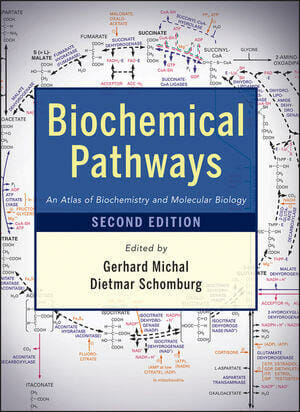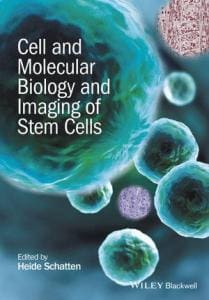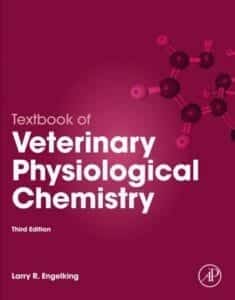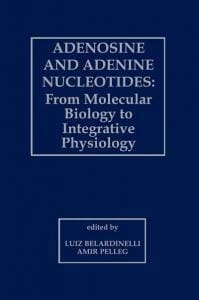Biochemical Pathways: An Atlas of Biochemistry and Molecular Biology, 2nd Edition

Now in its second edition, Biochemical Pathways continues to garner praise from students, instructors, and researchers for its clear, full-color illustrations of the pathways and networks that determine biological function.
Biochemical Pathways examines the biochemistry of bacteria, plants, and animals. It offers a quick overview of the metabolic sequences in biochemical pathways, the chemistry and enzymology of conversions, the regulation of turnover, the expression of genes, the immunological interactions, and the metabolic background of health disorders. A standard set of conventions is used in all illustrations, enabling readers to easily gather information and compare the key elements of different biochemical pathways. For both quick and in-depth understanding, the book uses a combination of:
- Illustrations integrating many different features of the reactions and their interrelationships
- Tables listing the important system components and their function
- Text supplementing and expanding on the illustrated facts
In the second edition, the volume has been expanded by 50 percent. Text and figures have undergone a thorough revision and update, reflecting the tremendous progress in biochemical knowledge in recent years. A guide to the relevant biochemical databases facilitates access to the extensive documentation of scientific knowledge.
Biochemical Pathways, Second Edition is recommended for all students and researchers in such fields as biochemistry, molecular biology, medicine, organic chemistry, and pharmacology. The book’s illustrated pathways aids the reader in understanding the complex set of biochemical reactions that occur in biological systems.
Read more: RNA Folding: Methods and Protocols
Preface to the Second Edition IX
From the Preface to the First Edition X
Contributors XI
1 Introduction and General Aspects 1
Gerhard Michal and Dietmar Schomburg
1.1 Organization of This Book 1
1.1.1 Conventions Used in This Book 3
1.1.2 Common Abbreviations 3
1.2 Carbohydrate Chemistry and Structure 4
1.2.1 Structure and Classification 4
1.2.2 Glycosidic Bonds 5
1.3 Amino Acid Chemistry and Structure 5
1.3.1 Structure and Classification 6
1.3.2 Peptide Bonds 6
1.4 Lipid Chemistry and Structure 6
1.4.1 Fatty acids 6
1.4.2 Acylglycerols and Derivatives 7
1.4.3 Waxes 7
1.4.4 Glycerophospholipids 7
1.4.5 Plasmalogens 7
1.4.6 Sphingolipids 7
1.4.7 Steroids 8
1.4.8 Lipoproteins 8
1.5 Physico-Chemical Aspects of Biochemical Processess 8
1.5.1 Energetics of Chemical Reactions 8
1.5.2 Redox Reactions 9
1.5.3 Transport Through Membranes 9
1.5.4 Enzyme Kinetics 10
2 The Cell and Its Contents 14
Gerhard Michal and Dietmar Schomburg
2.1 Classification of Living Organisms 14
2.2 Structure of Cells 14
2.2.1 Prokaryotic Cells 14
2.2.2 General Characteristics of Eukaryotic Cells 15
2.2.3 Special Structures of Plant Cells 17
2.2.4 Special Structures of Animal Cells 18
2.3 Protein Structure and Function 18
2.3.1 Levels of Organization 19
2.3.2 Protein Function 21
2.4 Enzymes 21
2.4.1 Catalytic Mechanism 21
2.4.2 Isoenzymes 23
2.4.3 Multienzyme Complexes 23
2.4.4 Reaction Rate 23
2.4.5 Classification of Enzymes 23
2.5 Regulation of the Enzyme Activity 24
2.5.1 Regulation of the Quantity of Enzymes 24
2.5.2 Regulation of the Activity of Enzymes 24
2.5.3 Site of Regulation 26
2.6 Nucleic Acid Structure 26
2.6.1 Components of Nucleic Acids 26
2.6.2 Properties of RNA Chains 27
2.6.3 Properties of DNA Chains 27
2.6.4 Compaction Levels of DNA Chains 28
2.7 Genetic Code and the Flow of Information 30
2.7.1 From DNA to RNA 30
2.7.2 From Nucleic Acids to Proteins – The Genetic Code 30
2.7.3 Influence of Errors 31
2.8 Polymeric Carbohydrates 31
2.8.1 Polymeric Carbohydrates in Energy Storage 31
2.8.2 Polymeric Carbohydrates as Structural Elements 32
2.9 Glycosylated Proteins and Peptides 32
2.9.1 Glycoproteins 33
2.9.2 Proteoglycans 33
2.9.3 Peptidoglycans 35
2.10 Lipid Aggregates and Membranes 35
3 Metabolism 37
3.1 Carbohydrate Metabolism and Citrate Cycle 37
Röbbe Wünschiers
3.1.1 Glycolysis and Gluconeogenesis 37
3.1.2 Polysaccharide Metabolism 42
3.1.3 Pyruvate Turnover and Acetyl-Coenzyme A 46
3.1.4 Di- and Oligosaccharides 48
3.1.5 Metabolism of Hexose Derivatives 48
3.1.6 Pentose Metabolism 51
3.1.7 Amino Sugars 54
3.1.8 Citrate Cycle 55
3.1.9 Glyoxylate Metabolism 57
3.2 Amino Acids and Derivatives 58
Röbbe Wünschiers
3.2.1 Nitrogen Fixation and Metabolism 58
3.2.2 Glutamate, Glutamine, Alanine, Aspartate, Asparagine and Ammonia Turnover 59
3.2.3 Proline and Hydroxyproline 62
3.2.4 Serine and Glycine 62
3.2.5 Lysine, Threonine, Methionine, Cysteine and Sulfur Metabolism 65
3.2.6 Leucine, Isoleucine and Valine 72
3.2.7 Phenylalanine, Tyrosine, Tryptophan and Derivatives 74
3.2.8 Histidine 79
3.2.9 Urea Cycle, Arginine and Associated Reactions 80
3.3 Tetrapyrroles 82
Martina Jahn and Dieter Jahn
3.3.1 Pathways for the Biosynthesis of Tetrapyrroles 82
3.3.2 Heme and Cytochrome Biosynthesis 86
3.3.3 Linear Tetrapyrroles 87
3.3.4 Biosynthesis of Chlorophylls 90
3.3.5 Biosynthesis of Cobalamins 91
3.3.6 Siroheme Biosynthesis 91
3.4 Lipids and Glycolipids 93
Röbbe Wünschiers
3.4.1 Fatty Acids and Acyl-CoA 93
3.4.2 Triacylglycerols (Triglycerides) 98
3.4.3 Phospholipids 100
3.4.4 Glycolipids 104
3.5 Steroids and Isoprenoids 107
Röbbe Wünschiers
3.5.1 Cholesterol 107
3.5.2 Hopanoids, Steroids of Plants and Insects 110
3.5.3 Isoprenoids 111
3.5.4 Steroid Hormones 114
3.5.5 Gestagen 115
3.5.6 Androgens 116
3.5.7 Estrogens 117
3.5.8 Corticosteroids 119
3.5.9 Bile Acids 121
3.6 Nucleotides and Nucleosides 124
Röbbe Wünschiers
3.6.1 Purine Nucleotides and Nucleosides 124
3.6.2 Pyrimidine Nucleotides and Nucleosides 130
3.7 Cofactors and Vitamins 133
Ida Schomburg
3.7.1 Retinol (Vitamin A) 133
3.7.2 Thiamin (Vitamin B1) 134
3.7.3 Riboflavin (Vitamin B2), FMN and FAD 135
3.7.4 Pyridoxine (Vitamin B6) 136
3.7.5 Cobalamin (Coenzyme B12, Vitamin B12) 137
3.7.6 Folate and Pterines 138
3.7.7 Pantothenate, Coenzyme A and Acyl Carrier Protein (ACP) 141
3.7.8 Biotin 141
3.7.9 Nicotinate, NAD+ and NADP+ 143
3.7.10 Ascorbate (Vitamin C) 145
3.7.11 Calciferol (Vitamin D) 146
3.7.12 Tocopherol (Vitamin E) 148
3.7.13 Phylloquinone and Menaquinone (Vitamin K) 148
3.7.14 Other Compounds 149
3.8 Nucleic Acid Metabolism in Bacteria 149
Susanne Peifer and Elmar Heinzle
3.8.1 Bacterial DNA Replication 149
3.8.2 Bacterial DNA Repair 151
3.8.3 Degradation of Nucleic Acids 156
3.9 Nucleic Acid Metabolism in Eukarya 157
Helmut Burtscher
3.9.1 Eukaryotic DNA Replication 157
3.9.2 Eukaryotic DNA Repair 162
3.10 Special Bacterial Metabolism and Biosynthesis of Antimicrobials 164
Julia Garbe, Annika Steen and Max Schobert
3.10.1 Bacterial Envelope 164
3.10.2 Bacterial Protein Export across the Cytoplasmic Membrane 166
3.10.3 Protein Transport across the Outer Membrane of Gram-Negative Bacteria 167
3.10.4 Bacterial Transport Systems 168
3.10.5 Bacterial Fermentations 169
3.10.6 Anaerobic Respiration 173
3.10.7 Chemolithotrophy 175
3.10.8 Quinoenzymes, Alkane and Methane Oxidation 178
3.10.9 Antibiotics 179
3.11 Electron Transfer Reactions and Oxidative Phosphorylation 183
Martina Jahn and Dieter Jahn
3.11.1 General Principles 183
3.11.2 Different types of electron transport chains 183
3.11.3 The Energetic Basis of the Oxidative Phosphorylation 183
3.11.4 Electron Transport System in Mitochondria and Bacteria 184
3.12 Photosynthesis 188
Dieter Oesterhelt and Josef Wachtveitl
3.12.1 Light Reaction 188
3.12.2 Dark Reactions 192
3.13 Plant Secondary Metabolism 193
Antje Chang
3.13.1 Phenolics 194
3.13.2 Terpenoids 198
3.13.3 Nitrogen-containing Secondary Metabolites 201
4 Protein Biosynthesis, Modifications and Degradation 210
4.1 Protein Synthesis in Bacteria 210
Martina Jahn and Dieter Jahn
4.1.1 Bacterial Transcription 210
4.1.2 Regulation of Bacterial Gene Expression 212
4.1.3 Bacterial Protein Synthesis 214
4.1.4 Degradation of Nucleic Acids 217
4.2 Protein Biosynthesis in Eukarya 219
Röbbe Wünschiers
4.2.1 Eukaryotic Transcription 219
4.2.2 Regulation of Eukaryotic Transcription 226
4.2.3 Eukaryotic Translation 228
4.2.4 Translational Regulation 231
4.2.5 mRNA Degradation 231
4.3 Cell Cycle in Eukarya 232
Stefan Ries
4.3.1 Core Components of the Cell Cycle Machinery 232
4.3.2 Cell Cycle Regulation in Yeast 234
4.3.3 G1 to S Transition in Mammalian Cells 234
4.3.4 G2 to M Transition in Mammalian Cells 235
4.3.5 Mitosis in Mammalian Cells 235
4.3.6 Cell Cycle Checkpoints 236
4.4 Posttranslational Modification of Proteins 238
Röbbe Wünschiers
4.4.1 Protein Processing in the Endoplasmic Reticulum 238
4.4.2 Glycosylation Reactions in the Golgi Apparatus 241
4.4.3 Terminal Carbohydrate Structures of Glycoconjugates 243
4.5 Protein Folding, Transport / Targeting and Degradation 244
Petra Dersch
4.5.1 Folding of Proteins 244
4.5.2 Vesicular Transport and Secretion of Proteins 248
4.5.3 Protein Transport into the Nucleus 249
4.5.4 Protein Transport into Mitochondria 252
4.5.5 Protein Transport into Chloroplasts 254
4.5.6 Protein Degradation 256
4.5.7 Protein Degradation by the Ubiquitin-Proteasome System 258
5 Viruses 261
Klaus Klumpp
5.1 General Characteristics of Viruses 261
5.1.1 Genomic Characteristics of Viruses 261
5.1.2 Structure 263
5.2 DNA Viruses 264
5.2.1 Papillomavirus 264
5.3 RNA Viruses 267
5.3.1 Hepatitis C Virus 267
5.4 Retroviruses 268
5.4.1 Human Immunodeficiency Virus (HIV) 268
6 Transport 272
6.1 Transport Through Membranes 272
Wilhelm Just
6.1.1 Systems of Eukaryotic Membrane Passage 272
6.1.2 Channels / Pores 272
6.1.3 Solute Carriers 276
6.1.4 Primary Active Transport Systems 277
6.1.5 Import by Endocytosis and Pinocytosis 278
6.1.6 The Cytoskeleton as Means for Intracellular Transport and Cellular Movements in Eukarya 278
6.2 Transport of Lipids in Plasma 279
Horst Klima
6.2.1 Apolipoproteins (Apo) 279
6.2.2 Plasma Lipoprotein Metabolism 279
6.2.3 Lipid Transport Proteins 281
6.2.4 Lipoprotein Receptors 281
6.2.5 Lipid Metabolic Disorders 282
6.3 Oxygen Transport by Hemoglobin 282
Gerhard Michal
6.3.1 Biosynthesis and Properties of Hemoglobin and Myoglobin 282
6.3.2 Oxygen Binding to Hemo- and Myoglobin 283
6.3.3 Hemoglobin Diseases in Humans 285
7 Signal Transduction and Cellular Communication 286
Gerhard Niederfellner
7.1 Intercellular Signal Transmission by Hormones 286
7.1.1 General Characteristics of Hormones 286
7.1.2 General Characteristics of Receptors 286
7.1.3 Insulin and Glucagon 287
7.1.4 Epinephrine and Norepinephrine (Catecholamines) 287
7.1.5 Hypothalamus-Anterior Pituitary Hormone System 287
7.1.6 Placental Hormones 291
7.1.7 Hormones Regulating the Extracellular Ca++, Mg++ and Phosphate Concentrations 292
7.1.8 Hormones Regulating the Na+ Concentration and the Water Balance 292
7.1.9 Hormones of the Gastrointestinal Tract 293
7.2 Nerve Conduction and Synaptic Transmission 294
7.2.1 Membrane Potential 294
7.2.2 Conduction of the Action Potential along the Axon 294
7.2.3 Transmitter Gated Signalling at the Synapse 294
7.2.4 Voltage Gated Signalling at the Synapse 296
7.2.5 Postsynaptic Receptors 296
7.2.6 Axonal Transport 296
7.3 Principles of Intracellular Communication 296
7.4 Receptors Coupled to Heterotrimeric G-Proteins 299
7.4.1 Mechanism of Heterotrimeric G-Protein Action 300
7.4.2 cAMP Metabolism, Activation of Adenylate Cyclase and Protein Kinase A 302
7.4.3 Activation of Phospholipase C and Protein Kinase C 302
7.4.4 Metabolic Role of Inositol Phosphates and Ca++ 303
7.4.5 Muscle Contraction 305
7.4.6 Visual Process 307
7.4.7 Olfactory and Gustatory Processes 308
7.4.8 Arachidonate Metabolism and Eicosanoids 309
7.5 Receptors Acting Through Tyrosine Kinases 311
7.5.1 Regulatory Factors for Cell Growth and Function 311
7.5.2 Components of the Signal Cascades 311
7.5.3 Receptor Tyrosine Kinases 312
7.5.4. Tyrosine Kinase-Associated Receptors (TKaR) 315
7.6 Programmed Cell Death (Apoptosis) 319
7.7 Receptors for Steroid and Thyroid Hormones, for Retinoids and Vitamin D 321
7.8 Cyclic GMP Dependent Pathways and Effects of Nitric Oxide (NO) 322
7.8.1 Membrane Bound Guanylate Cyclases 323
7.8.2 Soluble Guanylate Cyclases and Their Activation by Nitric Oxide (NO) 323
7.8.3 Protein Kinase G 323
8 Immune System 325
Ernst Peter Rieber
8.1 Components of the Immune System 325
8.1.1 Innate, Non Adaptive Immune System 325
8.1.2 Specific, Adaptive Immune System 328
8.1.3 Development and Maturation of the Cellular Components 328
8.1.4 Antigen Receptor of B Lymphocytes, Antibodies 330
8.1.5 Complement System 334
8.1.6 Antigen Receptor of T Lymphocytes 336
8.1.7 Antigen Presentation by MHC Molecules 337
8.1.8 Cytokines, Chemokines and Receptors 338
8.2 Generation of a Specific Immune Response 343
8.2.1 Activation of T Cells 343
8.2.2 CD4+ T Effector Cells, Regulation of the Immune Response 344
8.2.3 Activation of B Cells 345
8.2.4 Lymphocyte Circulation and Generation of Cellular and Humoral Immune Responses in Lymphoid Tissue 345
8.2.5 Cellular Cytotoxicity and Apoptosis 347
8.2.6 Interactions between the Immune System and the Neuroendocrine System 350
8.2.7 Immunological Tolerance 350
8.2.8 Induction of Specific Immune Responses against Pathogens 351
8.3 Pathologic Immune responses 352
8.3.1 IgE-Mediated Hypersensitivity of the Immediate Type 352
8.3.2 Autoimmunity 353
8.4 Adhesion of Leukocytes 354
Anton Haselbeck
9 Blood Coagulation and Fibrinolysis 357
Peter Müller
9.1 Hemostasis 357
9.2 Initial Reactions 358
9.2.1 Reactions Initiated by the Tissue Factor 358
9.2.2 Contact Activation 358
9.2.3 Generation of Binding Surfaces 358
9.3 Coagulation Propagation and Control 359
9.3.1 Requirements for Protease Activity 359
9.3.2 Pathways Leading to Thrombin 359
9.3.3 Key Events 359
9.3.4 Controlled Propagation 360
9.3.5 Generation of Fibrin 361
9.4 Platelets (Thrombocytes) 362
9.5 Fibrinolysis 364
9.5.1 Pathways of Plasminogen Activation 364
9.5.2 Control of Fibrinolysis 365
10 Biochemical Networks, Bioinformatics and Systems Biology 366
Dietmar Schomburg
10.1 Systems Biology and Networks 366
10.2 Modeling of Metabolic Fluxes 366
10.3 Biochemical Pathways Information Resources 366
10.3.1 Overview 366
10.3.2 Detailed Description of Some Databases 367
Index 374
You May Also Like:













![Ettinger’s Textbook of Veterinary Internal Medicine 9th Edition [PDF+Videos] Ettinger’s Textbook of Veterinary Internal Medicine 9th Edition [True PDF+Videos]](https://www.vet-ebooks.com/wp-content/uploads/2024/10/ettingers-textbook-of-veterinary-internal-medicine-9th-edition-100x70.jpg)

![Textbook of Veterinary Diagnostic Radiology 8th Edition [PDF+Videos+Quizzes] Thrall’s Textbook of Veterinary Diagnostic Radiology, 8th edition PDF](https://www.vet-ebooks.com/wp-content/uploads/2019/09/textbook-of-veterinary-diagnostic-radiology-8th-edition-100x70.jpg)






